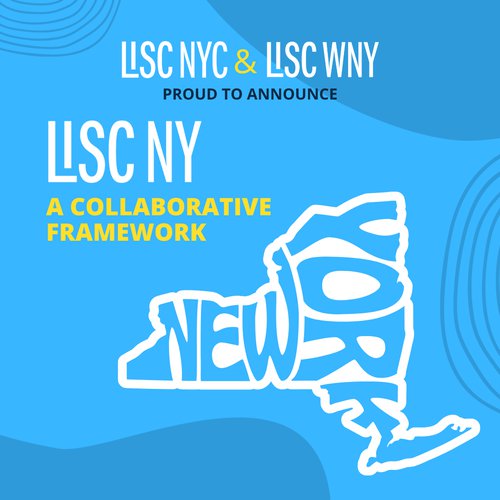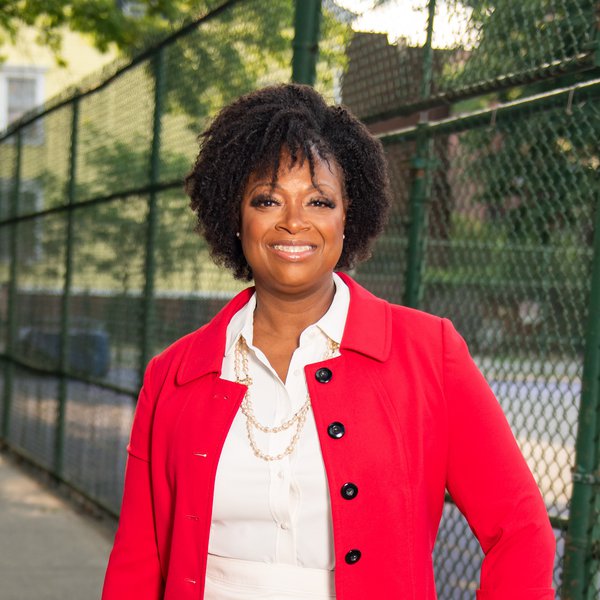( ENSPIRE INTERVIEW ) Community Development Non-Profit Expands Outreach to Support Underinvested Neighborhoods and Commercial Corridors
ENSPIRE Contributor: Claya Davis
A combined effort of LISC NYC and LISC WNY, LISC NY is on a mission to reach underrepresented communities, minority-owned small businesses, and New York-based non-profits. By deploying a combined $5 million dollars, they intend to elevate their advocacy efforts, expand their market impact, and leverage each business’ unique resources in order to ensure that Black and minority-owned businesses are supported in their efforts to make a full economic recovery in the aftermath of the COVID-19 pandemic.
LISC recognizes the many disadvantages that the communities that they support face. “We at LISC NY will continue to unapologetically acknowledge that there are racial, economic, and other systemic barriers that populations face and we are committed to doing all that we can with capital investment to address those inequities,” says Valerie White, LISC NY’s senior executive director.

ENSPIRE spoke with Valerie to learn more about the organization and its goals.
What exactly is LISC NY and what role do you play in the organization?
LISC is the Local Initiatives Support Corporation. We are a national non-profit that raises and invests capital that supports disinvested communities and marginalized populations. We are working with communities to identify systemic inequities, discover what the barriers are to equity, and then through policy and advocacy, and capital investment, we move those barriers. It’s our mission to identify those systems of inequity, both nationally and how it works in each particular community.
I started here in April 2020. I spent the bulk of my career on Wallstreet, but have also worked for city and state government. This is a sort of culmination of my background, so I am very excited to be here at this time.
How did LISC come to be what it is today?
It started 42 years ago in the south Bronx, supported by the Ford foundation. The concept was that community development needed to look at reinvesting in communities that had not been invested in many years. I think it was initially President Reagan and Carter who had visited the South Bronx in the late 70s. It was a pile of rubble. Then the Ford Foundation looked at it under Franklin Thomas, who just recently passed away, and wondered how you could have a concept of community development that included the community, invest the dollars, and base it on equity. And so it started in the South Bronx and then over the last 42 years, it has spread across the country.
We have 39 offices across the country. 38 are in urban markets and the 39th supports our rural program that exists in 40 states, again all based on equity and economic equity.

What would you say is the key belief driving LISC NY’s advocacy?
The key is that communities of color and impoverished communities have just not had fair access to services, housing, support, and capital for businesses. We are out of time in this country. Periodically, we got through something as a country where it becomes impossible to ignore these systemic inequities that we just deal with regularly, and every once in a while there is a societal happening, whether it’s the pandemic, Black Lives Matter, the recent act of terror in Buffalo, where suddenly society goes through this period in which they want to invest in communities. But then something usually comes along, people forget, and society just goes back to turning a blind eye to what’s happening. This time that the curtain has been pulled off, we want to leave the curtain open and make real changes to equity. And that might mean offering some additional support to these communities so that we can get these populations into a place of equity that did not exist even prior to the pandemic.

What does LISC NY do for communities and how does it allocate funds?
Everything we do is based on a system of equity, so we invest in community infrastructure and commercial real estate. So things like affordable housing, home ownership or rental, health care facilities, charter schools, and then we support programs that help raise up marginalized populations.
What is the fundraising process like? Where did the $5 Million come from? Is there any potential to raise more money in the future?
Well, the $5 million is only a very small part of our overall funding. That was specifically to grants to small businesses that are minority-owned, and that was only from the time of COVID. So the $5 million has been raised only by the NYC and WNY offices in the last 2 years to specifically address grant programming for minority-owned businesses that were suffering because of the pandemic.
The capital comes from philanthropic funders, so that could be foundations, or corporate or financial institutions, many of which come from CRA, but also money that we might raise through our own activities, whether that be loan origination or C for Service contracting where we use our shared collective expertise to help municipalities and communities put forth equity and inclusion projects.

How did the COVID-19 pandemic affect LISC NY?
We became much more recognized nationally and locally as a community development financial institution that could deploy capital, deploy it quickly, and address those areas and communities that were the hardest hit by COVID. We know that communities of color had much higher rates of deaths, businesses were closing rapidly, and there were greater numbers of lost jobs and higher infection rates. The services to support the stress of the community were not there, so those communities and populations were much more negatively impacted. Communities of color and poverty communities had not been a place of equity even prior to the pandemic, so the pandemic just exacerbated all of that.
So, as we continue to look to invest in and support these communities, not just for capital dollars but also for technical support and capacity building, our goal of equity is not where these communities were pre-pandemic but to bring them to an actual place of real equity. We are very unapologetic about the fact that we are looking to make that move with the communities that we work in.
How did you use the $5 Million dollars and who did it support?
The $5 Million that we have accrued helped a large variety of businesses. We have given out grants of $10,000 or more to over 484 small businesses since April 2020. Doing so has saved close to 1,000 jobs in the most impacted communities in New York City and Western New York. The number of jobs and the number of businesses that have been touched and saved by that grant money–and it’s grant money, not loan money–at a time when many businesses were having difficulty applying for PPP because they did not have the business infrastructure, this money helped them stay open.
We also provided them with additional support by identifying 16 community-based organizations across the city that focused on business development that could not only help them receive the money but continue to work with them to this day on sustaining their businesses and remaining open and viable.
Are there any specific organizations that LISC works with that you want to shout out?
There is one community-based organization, Bridge Street Development Corporation, and they have been very much featured in media with “Black girl magic row’ because many of the businesses there are owned by Black women. It is an eclectic mix; there are wellness centers, herbal stores, small eateries, and clothing stores. So we support those businesses and that business development organization.
How can readers get involved with LISC NY and support the work that it is doing?
We do accept donations. Specifically, we have a fund called the Soil Fund in Western New York that is specifically indented to support Black-owned businesses and Black-run non-profits that have been impacted by the act of terror in East Buffalo. We are going to be giving grants of $15,000 to those Black businesses and non-profits so that they can continue to address four different needs in that area. Firstly, it is a food desert, so we want to focus on bringing in more products and healthy choices for those establishments. The second thing is to provide transportation for the elderly to get their pharmaceutical needs met. The third is indented to go towards any emergency housing that may be relevant for individuals as it relates to the act of terror. And the fourth is to support plaque-making to memorialize the lives that were lost on Jefferson Avenue. So donating to that Soil Fund is a great way that individuals can support us.

In the next coming months, LISC NYC and WNY will band together to host a series of town hall meetings in cities across New York. These events are intended to bring business owners, political figures, elected officials, and community development organizations and advocates together in order to discuss policies and identify programs that can support and empower underrepresented neighborhoods and communities. The first of these town hall-style meetings is scheduled to take place in Syracuse during the first few weeks of August.
For more information about LISC NY, its programs, and advocacy, visit their website and social media. To donate directly to The Soil Fund, click here.
Related Articles: LISC NYC Closes $12.5M Deal For Affordable Housing Project In West Harlem, LISC NYC Plea for Immediate Financial Relief For Minority Business Owners, LISC Small Business Recovery Fund For Minorities In New York










